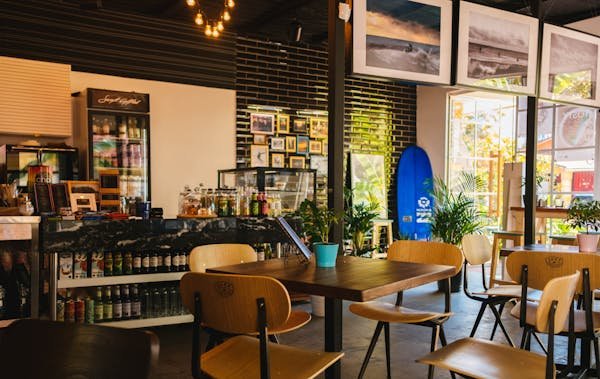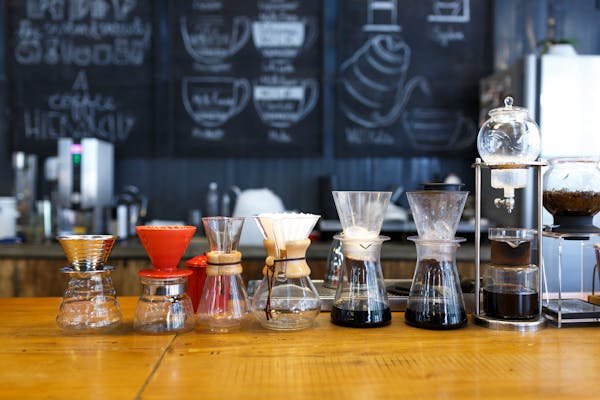Running a bar and restaurant is more than just serving delicious food and drinks; it’s about creating an experience that keeps customers coming back for more. With fierce competition and ever-changing customer preferences, attracting more customers to your establishment can be challenging. However, with the right marketing strategies, you can increase foot traffic, boost sales, and build a loyal customer base. In this article, we’ll explore detailed, actionable strategies to help you attract more customers to your bar and restaurant.
Understanding Your Audience
Creating Detailed Customer Profiles
To truly understand your audience, start by creating detailed customer profiles. These profiles, or personas, should include demographic information such as age, gender, income level, and occupation, as well as psychographic information like interests, lifestyle, and dining preferences.
For instance, you might have a persona named “Young Professional Paul,” a 28-year-old who works in tech, enjoys craft cocktails, and prefers trendy, vibrant atmospheres for socializing after work.
Another persona could be “Family-Focused Fiona,” a 40-year-old parent looking for family-friendly dining options with a varied menu that caters to both adults and children. By creating these profiles, you can tailor your marketing efforts to meet the specific needs and preferences of different segments of your audience.
Analyzing Customer Data
Leverage customer data to gain deeper insights into your audience. Use your POS system, reservation platform, and social media analytics to track customer behavior and preferences. Look for patterns in the data, such as peak dining times, popular menu items, and the demographics of your most frequent visitors.
Analyzing this data can reveal valuable trends and help you make informed decisions about menu offerings, promotional strategies, and staffing needs. For example, if data shows that weekends are particularly busy with families, you might consider offering a special family brunch menu or kids’ activities during those times.
Conducting Competitive Analysis
Understanding your audience also involves knowing how your competitors attract and retain their customers. Conduct a thorough competitive analysis to see what other bars and restaurants in your area are doing well and where they might be falling short. Visit their establishments, review their menus, and observe their customer service. Analyze their online presence, including their websites, social media profiles, and online reviews.
Identify the unique selling points that make your competitors successful and think about how you can differentiate your own establishment. For example, if a nearby bar is known for its live music, you might focus on offering a superior craft beer selection or a more intimate, relaxed atmosphere.
Utilizing Social Listening
Social listening involves monitoring online conversations about your brand and industry to gain insights into customer sentiment and trends. Use social listening tools to track mentions of your bar and restaurant on social media, review sites, and forums. Pay attention to what customers are saying about your food, service, ambiance, and overall experience.
This feedback can provide valuable insights into what your customers love and where there is room for improvement. Additionally, monitor discussions about your competitors and industry trends to stay ahead of the curve. For example, if you notice a growing interest in plant-based menu options, consider adding more vegetarian and vegan dishes to your menu.
Engaging Directly with Customers
Direct engagement with customers is one of the best ways to understand their needs and preferences. Encourage open communication by asking for feedback through surveys, comment cards, and social media interactions. Host customer appreciation events where you can interact with patrons and gather their input in a relaxed setting.
Use the insights gained from these interactions to make improvements and tailor your offerings to better meet customer expectations. For instance, if multiple customers express a desire for more gluten-free options, consider expanding your gluten-free menu items and clearly highlighting them on your menu.
Adapting to Changing Demographics
Stay attuned to changes in the demographics of your local area. Population shifts, new developments, and changing economic conditions can all impact your customer base. For example, if a new office complex opens nearby, you might see an influx of young professionals looking for lunch and happy hour options.
Adapt your marketing and menu to cater to these new customers, such as offering quick, affordable lunch specials and after-work drink deals. Regularly update your customer profiles to reflect these changes and ensure your marketing strategies remain relevant.
Segmenting Your Audience for Targeted Marketing
Segmenting your audience allows you to create more personalized and effective marketing campaigns. Divide your customer base into distinct groups based on their characteristics and behaviors. For example, you might have segments for regular weekday lunch patrons, weekend diners, and special event attendees.
Tailor your marketing messages and promotions to each segment. For example, send email promotions for lunch discounts to your weekday segment and advertise upcoming events or themed nights to your weekend diners. This targeted approach ensures that your marketing efforts resonate with the right audience and drive more engagement.
Incorporating Feedback into Your Strategy
Actively incorporating customer feedback into your business strategy shows that you value your customers’ opinions and are committed to continuous improvement. Create a structured process for collecting and analyzing feedback. Share positive feedback with your team to boost morale and use constructive criticism to identify areas for improvement.
Communicate the changes you make based on customer feedback through your marketing channels. For example, if customers suggest extending happy hour hours, make the change and promote it as a direct response to their input. This demonstrates that you listen to your customers and are willing to adapt to meet their needs.
Hosting Focus Groups
Focus groups provide an opportunity to gather in-depth insights from a representative sample of your target audience. Invite a diverse group of customers to participate in discussions about their dining experiences, preferences, and expectations. Use these sessions to test new menu items, marketing campaigns, and service improvements.
The qualitative data gathered from focus groups can complement the quantitative data from surveys and analytics, giving you a comprehensive understanding of your audience. For example, if you’re considering a menu revamp, a focus group can provide valuable feedback on potential new dishes and how they fit with your brand.
Enhancing Your Online Presence

Developing a High-Quality Website
Your website is the cornerstone of your online presence. It should not only look good but also function seamlessly. Ensure your website is visually appealing, with a clean layout, intuitive navigation, and high-quality images that showcase your food, drinks, and ambiance.
Mobile responsiveness is critical, as many customers will visit your site from their phones. Include essential information such as your menu, hours of operation, location, and contact details. Integrate an online reservation system to make booking a table convenient for your customers. Adding a blog section can also help you share updates, recipes, and stories that engage your audience.
Optimizing for Search Engines (SEO)
SEO is vital for driving organic traffic to your website. Conduct keyword research to find the terms your potential customers are searching for, such as “best cocktails in [your city]” or “family-friendly restaurant near me.” Use these keywords naturally throughout your website content, including in page titles, meta descriptions, headers, and image alt texts.
Create high-quality, informative content that answers common questions and provides value to your audience. Regularly update your blog with SEO-optimized posts to keep your site fresh and relevant. Building backlinks from reputable websites can also improve your search engine rankings.
Leveraging Local SEO
For bars and restaurants, local SEO is particularly important. Claim and optimize your Google My Business listing with accurate information, high-quality photos, and up-to-date contact details. Encourage customers to leave reviews on Google and other review sites, as positive reviews can significantly boost your local search visibility.
Use local keywords in your website content and blog posts, such as the names of your neighborhood or city. Ensure your business is listed in local directories and on social media platforms with consistent information across all listings.
Engaging Content Creation
Creating engaging content is essential for building a strong online presence. Develop a content calendar to plan and schedule regular posts. Share a mix of content types, including blog articles, videos, and social media posts. Highlight your menu items, special events, and behind-the-scenes looks at your kitchen or staff.
Use high-quality images and videos to capture attention. Stories about your restaurant’s history, your chefs, and your sourcing practices can make your content more relatable and engaging. Consider creating how-to videos or live cooking demonstrations to showcase your culinary expertise.
Utilizing Social Media Effectively
Social media platforms are powerful tools for engaging with your audience and attracting new customers. Choose platforms that are most popular with your target audience, such as Facebook, Instagram, and Twitter. Post regularly with a mix of content, including photos of your dishes, updates about events and promotions, and customer testimonials.
Use hashtags strategically to increase your reach and visibility. Engage with your followers by responding to comments, messages, and reviews promptly. Consider running social media contests or giveaways to boost engagement and attract new followers. Use Instagram Stories and Facebook Live to create real-time connections with your audience.
Online Advertising
Investing in online advertising can help you reach a broader audience and drive targeted traffic to your website. Use platforms like Google Ads and social media ads to create targeted campaigns. Define your audience based on demographics, interests, and behaviors.
Create visually appealing ads with strong calls-to-action that encourage users to visit your website or make a reservation. Monitor the performance of your ads and adjust your strategy based on the results. Consider retargeting campaigns to reach users who have previously visited your website but haven’t yet converted.
Email Marketing
Email marketing is a powerful way to keep your customers informed and engaged. Build an email list through sign-ups on your website and in-house promotions. Offer incentives such as discounts or exclusive deals to encourage sign-ups. Send regular newsletters that include updates about your menu, special events, and promotions.
Personalize your emails to make them more relevant to the recipient. Use compelling subject lines to increase open rates and include clear calls-to-action to drive engagement. Monitor your email marketing performance and adjust your strategy based on metrics such as open rates, click-through rates, and conversions.
Online Reviews and Reputation Management
Online reviews can significantly impact your restaurant’s reputation and attract new customers. Encourage satisfied customers to leave positive reviews on platforms like Google, Yelp, and TripAdvisor.
Respond to reviews promptly, thanking customers for their positive feedback and addressing any negative feedback professionally and constructively. Use feedback from reviews to identify areas for improvement and make necessary changes. Highlight positive reviews on your website and social media to build trust and credibility.
Influencer Marketing
Partnering with influencers can help you reach a wider audience and build credibility. Identify local influencers who have a strong following and align with your brand values. Collaborate on content such as sponsored posts, reviews, and social media takeovers.
Influencers can provide authentic endorsements and introduce your restaurant to potential customers. Offer influencers a free meal or special discount in exchange for their promotion. Track the success of these collaborations by monitoring engagement and new customer visits.
Monitoring and Analyzing Your Online Presence
Regularly monitoring and analyzing your online presence is crucial for continuous improvement. Use tools like Google Analytics, social media insights, and review site dashboards to track key metrics such as website traffic, engagement rates, and customer sentiment.
Identify patterns and trends to understand what’s working and where there is room for improvement. Use these insights to refine your online strategy and optimize your efforts. Regularly update your website, social media profiles, and other online listings to ensure that all information is accurate and up-to-date.
Integrating Online and Offline Marketing
Integrating your online and offline marketing efforts can create a cohesive and effective strategy. Promote your online presence in your physical location with signage, table tents, and business cards that encourage customers to follow you on social media, visit your website, and sign up for your email list.
Use your online platforms to drive foot traffic by promoting in-house events, specials, and limited-time offers. An integrated approach ensures that your marketing efforts are aligned and mutually reinforcing, maximizing your overall impact.

Creating a Memorable Experience
Offering Unique Menu Items
A unique and diverse menu can set your bar and restaurant apart from the competition. Offer a mix of classic favorites and innovative dishes that reflect the latest food trends.
Consider including locally sourced ingredients and seasonal specials. Signature cocktails and unique drink offerings can also enhance the experience. Regularly update your menu to keep it fresh and exciting.
Providing Excellent Customer Service
Excellent customer service is key to attracting and retaining customers. Train your staff to be friendly, attentive, and knowledgeable about the menu. Ensure that they handle customer inquiries and complaints professionally.
Personalized service, such as remembering regular customers’ preferences, can go a long way in building loyalty. Encourage staff to engage with customers and make them feel welcome.
Creating an Inviting Atmosphere
The ambiance of your bar and restaurant plays a crucial role in attracting customers. Create an inviting atmosphere with comfortable seating, pleasant lighting, and appropriate music.
Decorate your space to reflect your brand’s personality. For example, if you run a sports bar, include sports memorabilia and large screens for watching games. If you have a family-friendly restaurant, ensure the space is welcoming for all ages.
Hosting Events and Promotions
Events and promotions can draw in new customers and encourage repeat visits. Host themed nights, live music, trivia nights, and other special events.
Offer promotions such as happy hour deals, weekend brunch specials, and loyalty programs. Collaborate with local businesses and influencers to promote your events. Use social media, email marketing, and in-house advertising to spread the word.
Leveraging Online Marketing
Email Marketing
Email marketing is an effective way to keep your customers informed and engaged. Start by building an email list through your website, social media, and in-house sign-ups. Offer incentives such as discounts or exclusive deals to encourage sign-ups. Send regular newsletters that include updates about your menu, upcoming events, and special promotions.
Personalize your emails to make them more relevant to the recipient. For instance, send birthday discounts or special offers to loyal customers. Use a compelling subject line to increase open rates and include clear calls-to-action to drive engagement.
Influencer Collaborations
Partnering with local influencers can help you reach a broader audience. Identify influencers who align with your brand and have a strong following in your area. Collaborate on content such as Instagram takeovers, blog reviews, or sponsored posts.
Influencers can provide authentic endorsements and introduce your establishment to potential customers. Offer influencers a free meal or a special discount in exchange for their promotion. Track the success of these collaborations by monitoring engagement and new customer visits.
Online Advertising
Investing in online advertising can boost your visibility and attract new customers. Use platforms like Google Ads and Facebook Ads to create targeted campaigns. Define your audience based on demographics, interests, and location. For example, target local residents who are interested in dining out or attending events.
Create visually appealing ads with strong calls-to-action. Monitor the performance of your ads and adjust your strategy based on the results. Consider retargeting campaigns to reach visitors who have previously engaged with your website or social media profiles.
Loyalty Programs
Implementing a loyalty program can encourage repeat visits and build customer loyalty. Offer rewards such as discounts, free items, or exclusive access to events for frequent customers. Use a points-based system where customers earn points for each visit or purchase.
Promote your loyalty program through your website, social media, and in-house advertising. Make it easy for customers to join and track their rewards. Regularly update your program to keep it exciting and valuable.
Engaging with the Community
Community Involvement
Getting involved in your local community can enhance your reputation and attract more customers. Sponsor local events, sports teams, or charity initiatives. Participate in community fairs and festivals by setting up a booth or offering samples of your food and drinks. C
ollaborate with local businesses to create joint promotions or events. Highlight your community involvement on your website and social media to show your commitment to supporting local causes.
Customer Feedback and Improvement
Listening to your customers and continuously improving your offerings is crucial for attracting and retaining customers. Encourage customers to provide feedback through surveys, comment cards, or online reviews. Analyze the feedback to identify areas for improvement and make necessary changes.
For example, if customers frequently mention slow service, consider hiring additional staff or streamlining your processes. Communicate the changes you make based on customer feedback to show that you value their opinions and are committed to providing a great experience.
Hosting Private Events
Offering your space for private events can attract new customers and generate additional revenue. Market your bar and restaurant as an ideal venue for birthday parties, corporate events, and other special occasions.
Provide customizable event packages that include catering, decorations, and entertainment options. Promote your event hosting services through your website, social media, and local business networks. Ensure that your staff is trained to handle events professionally and deliver exceptional service.
Utilizing Technology

Online Ordering and Delivery
Offering online ordering and delivery services can attract customers who prefer to enjoy your food and drinks at home. Partner with delivery platforms like Uber Eats, DoorDash, or Grubhub to reach a wider audience.
Ensure that your menu is easy to navigate and that the ordering process is seamless. Promote your delivery services through your website, social media, and email marketing. Consider offering exclusive online deals or discounts to encourage orders.
Reservations and Waitlist Management
Implementing an online reservation and waitlist management system can enhance the customer experience and streamline operations. Use platforms like OpenTable, Resy, or Yelp Reservations to allow customers to book tables online.
Provide real-time updates on wait times and notify customers when their table is ready. An efficient reservation system reduces wait times and improves customer satisfaction, making your establishment more attractive to potential patrons.
Mobile Apps
Developing a mobile app for your bar and restaurant can offer convenience and enhance customer engagement. Include features such as online ordering, reservations, loyalty programs, and event notifications.
Promote your app through your website, social media, and in-house advertising. Encourage downloads by offering exclusive deals or rewards for app users. A well-designed app can increase customer loyalty and make it easier for customers to interact with your brand.
Digital Menus
Digital menus can enhance the dining experience and make it easier for customers to explore your offerings. Use QR codes on tables to allow customers to view the menu on their smartphones. Update your digital menu regularly to reflect seasonal specials and new items.
Include high-quality images and detailed descriptions to entice customers. Digital menus are not only convenient but also reduce the need for physical menus, promoting hygiene and sustainability.
Conclusion
Attracting more customers to your bar and restaurant requires a strategic and multifaceted approach. By understanding your audience, enhancing your online presence, and creating a memorable experience, you can significantly increase foot traffic and build a loyal customer base.
Understanding your audience involves creating detailed customer profiles, analyzing customer data, conducting competitive analysis, utilizing social listening, and engaging directly with your patrons. These strategies ensure that your marketing efforts are tailored to the specific needs and preferences of your target market, making your messages more relevant and impactful.
Read Next:
- Marketing Strategies to Grow Your Small Restaurant
- Fresh Marketing Ideas to Ring in the New Year
- Proven Marketing Strategies for Contractors
- Creative Pinterest Name Ideas for Affiliate Marketers
- How to Create Effective Email Marketing Campaigns





















Comments are closed.